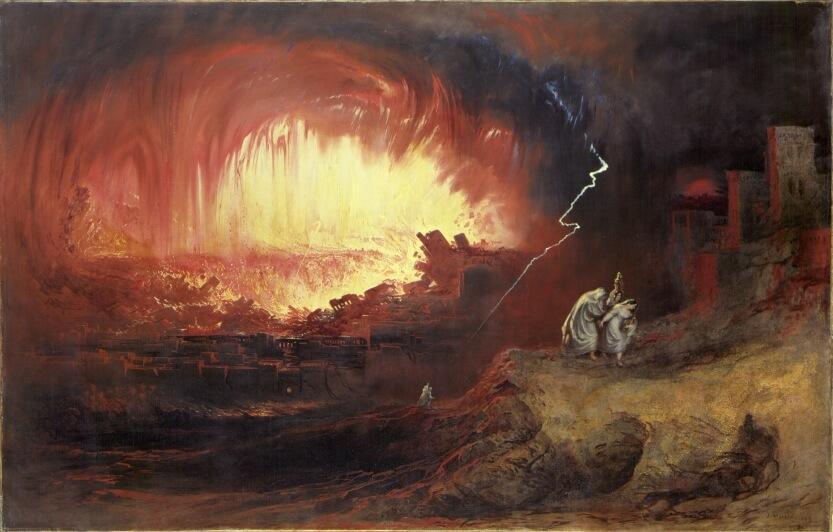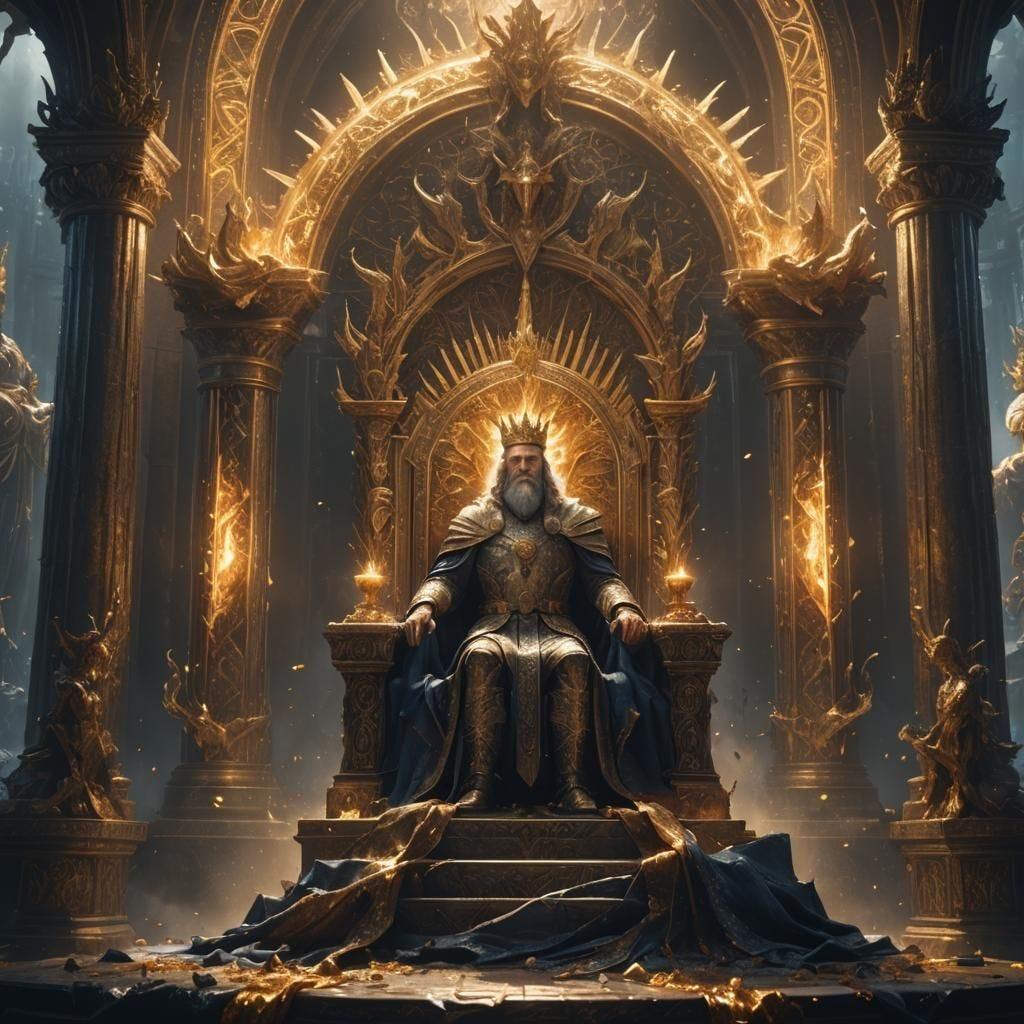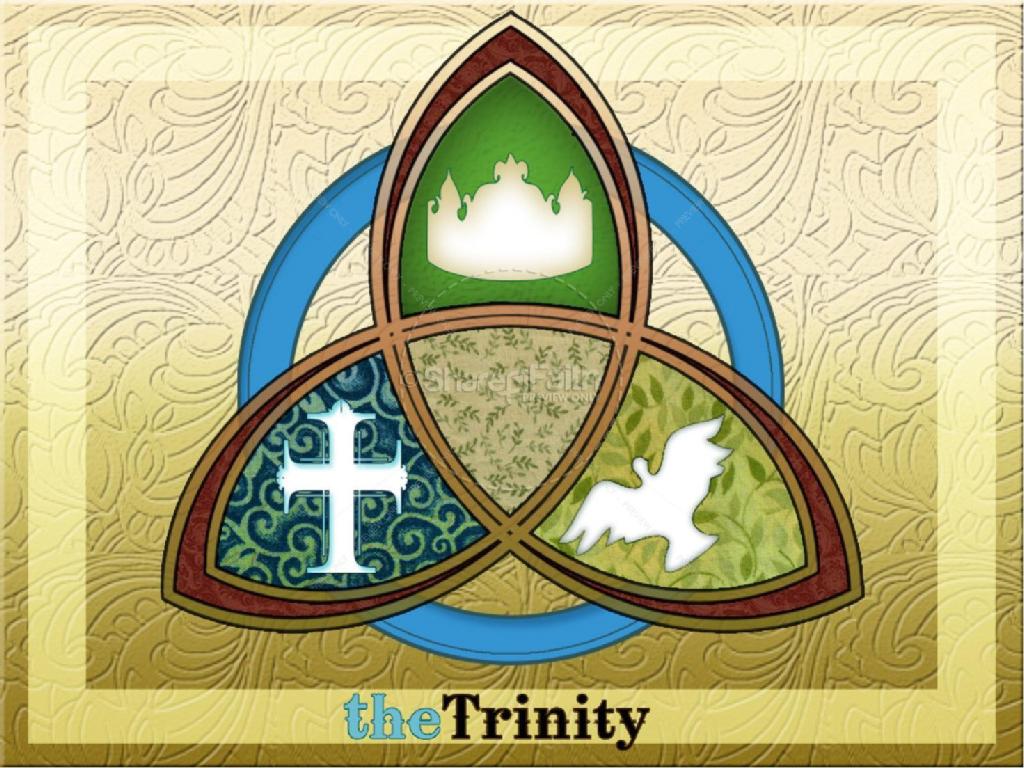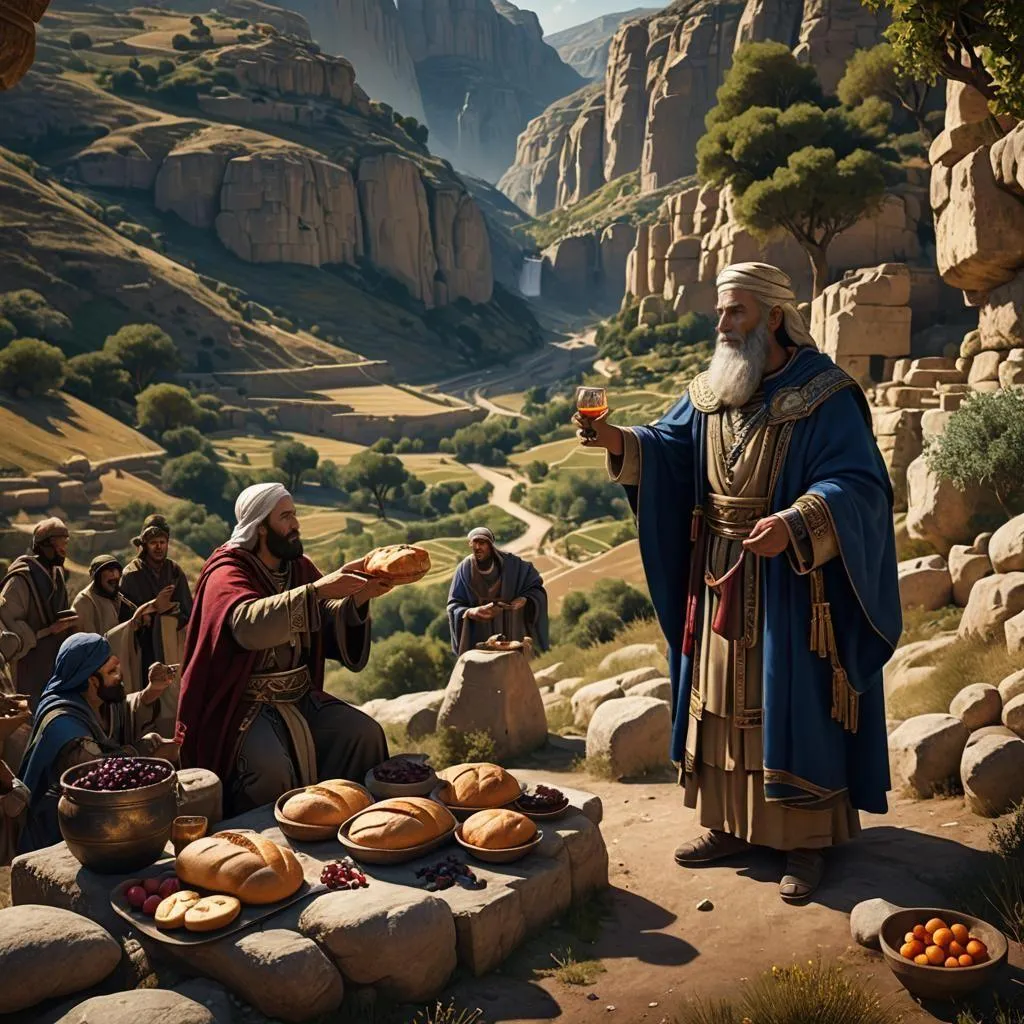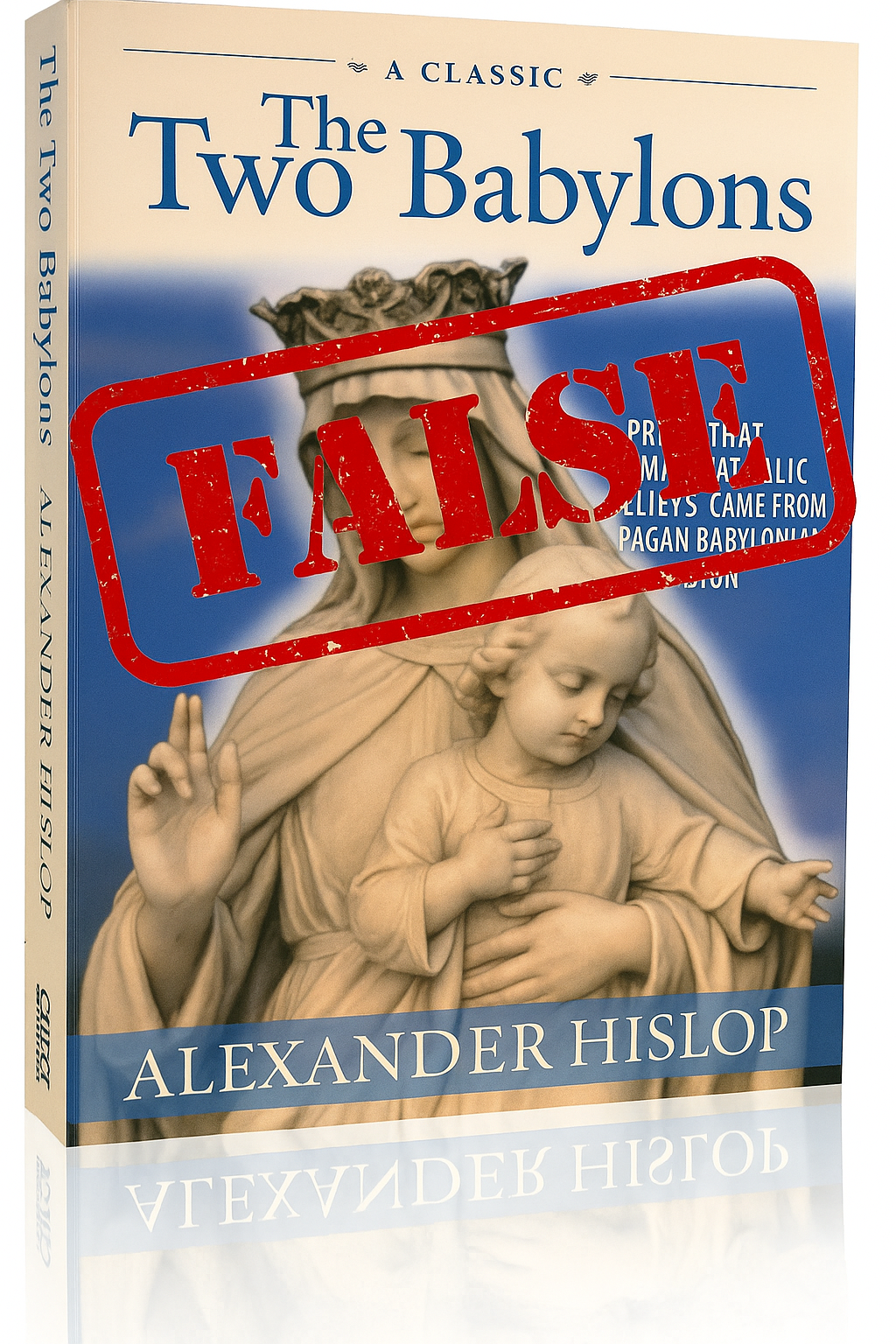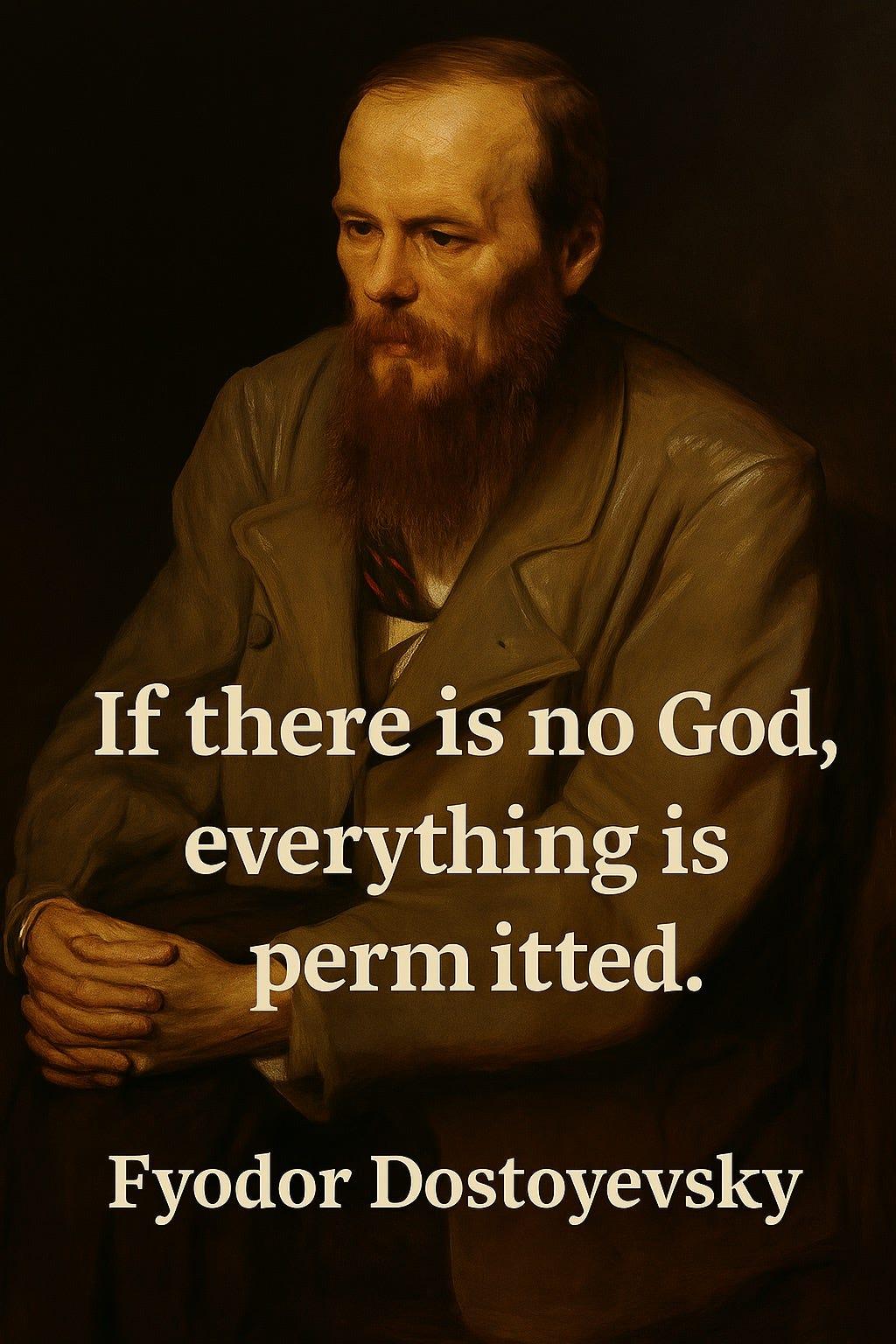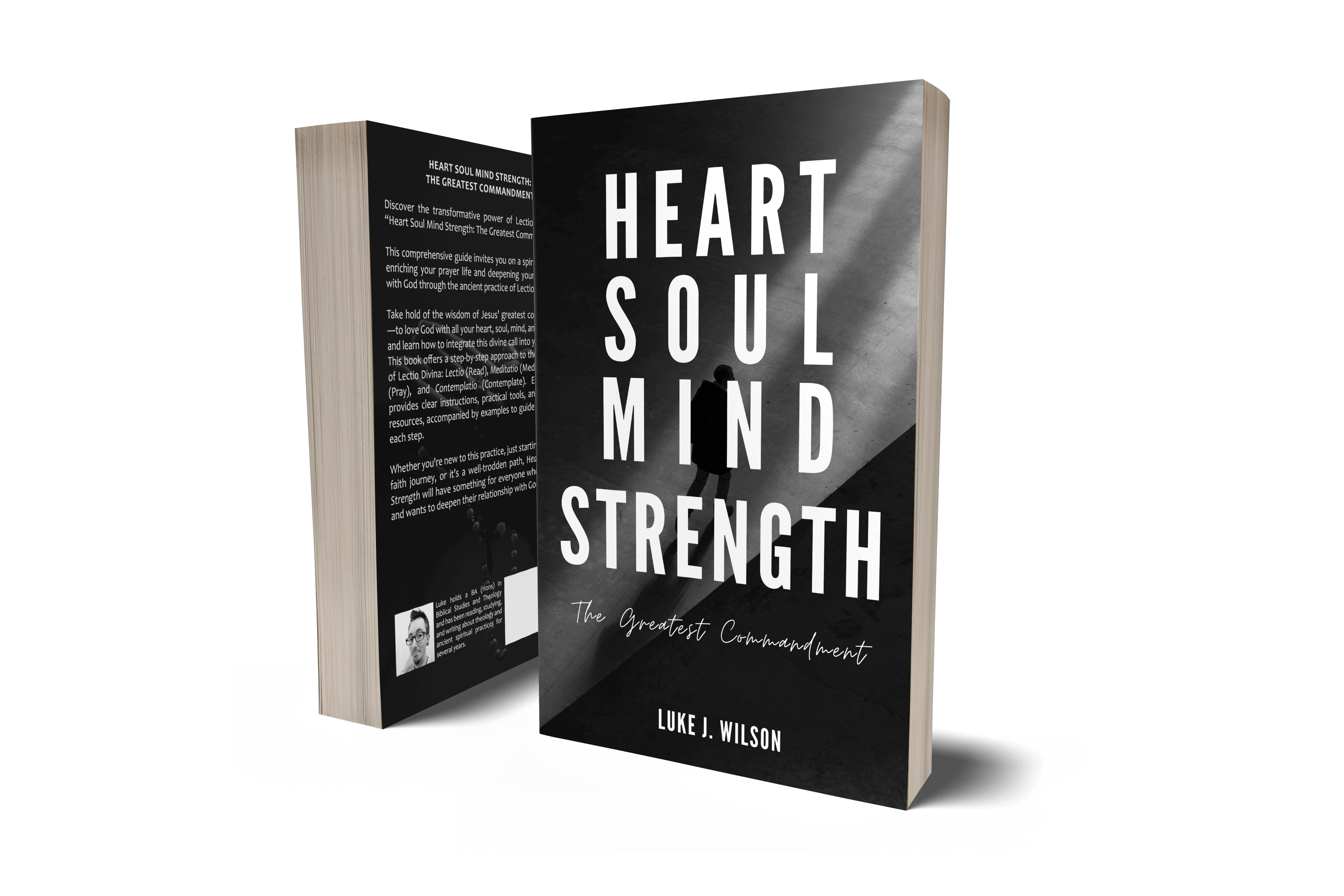An Examination of Conditional Immortality (Part Two)

Welcome to Part Two of my study and examination of Conditional Immortality (aka Annihilationism). If you missed part one, you can read that one here.
As with part one, this will be a long post as there is still much ground to cover before we can really grasp the bigger picture about what Scripture teaches. So with that said, I’ll pick right up where we left off. In part one, I covered a lot of New Testament texts, a few Old Testament passages, plus a look at what some of the earliest church leaders also wrote on the topic to the early church. In this one, we will be looking at a few more Old Testament examples and how they relate to the imagery used in Revelation, amongst other things.
Unquenchable Fire and Undying Worms
What of unquenchable fire and undying worms? Do these phrases really mean that the fuel of the fire and the worms must last forever and ever? We have a few references to shed some light on the meaning of these phrases which we can examine below:
Ezekiel 20:46–48
Mortal, set your face toward the south, preach against the south, and prophesy against the forest land in the Negeb; say to the forest of the Negeb, Hear the word of the Lord: Thus says the Lord God, I will kindle a fire in you, and it shall devour every green tree in you and every dry tree; the blazing flame shall not be quenched, and all faces from south to north shall be scorched by it. All flesh shall see that I the Lord have kindled it; it shall not be quenched.
So, in our first example, Ezekiel was obviously not prophesying that the forests of Negeb would burn forever and never go out. Instead, fire that “shall not be quenched” is used to mean fire that cannot be interrupted or stopped in its destructive purpose. No one is able to stop a fire like this until it has run its course, or it is stopped by something greater, which is what the word “quench” actually means. It is an action performed by something external which stops the flames — what it doesn’t mean is a fire burning out naturally once it consumes its fuel. The fire will continue regardless.
Jeremiah 17:27
But if you do not listen to me, to keep the sabbath day holy, and to carry in no burden through the gates of Jerusalem on the sabbath day, then I will kindle a fire in its gates; it shall devour the palaces of Jerusalem and shall not be quenched.
Here is another reference to an unquenchable fire consuming something and not being stopped even after the object of destruction has been “devour[ed]”. The image is one of a fire which rages on and on, even after everything in it is burnt up and destroyed.
Now let’s move onto the “undying worms” and see how that phrase is used. In the New Testament we see this phrase used in Mark 9:47–48, which originally comes from Isaiah, and also a similar theme in Jeremiah.
Isaiah 66:24
And they shall go out and look at the dead bodies of the people who have rebelled against me; for their worm shall not die, their fire shall not be quenched, and they shall be an abhorrence to all flesh.
A little earlier in Isaiah 66 (v.16) we see that God executes judgement with fire and “by his sword, on all flesh”, and that the dead will be many, ending the chapter with the verse quoted above. Jeremiah picks up on a similar theme of God’s judgement, people being killed to such an extent there won’t be room to bury them. This is also where we find a reference to Gehenna, or the valley of the son of Hinnom, as its name means (also called Topheth), in chapters 7 and 19. The concept of Gehenna as a place of punishment is then picked up by Jesus in Matthew 10:28, which he uses in a more eschatological sense.
Jeremiah 7:32–33
Therefore, the days are surely coming, says the Lord, when it will no more be called Topheth, or the valley of the son of Hinnom, but the valley of Slaughter: for they will bury in Topheth until there is no more room. The corpses of this people will be food for the birds of the air, and for the animals of the earth; and no one will frighten them away.
In Isaiah, the worms and the unquenchable fire are consuming corpses — not living people. It’s not said that these things will burn forever, but even if they did, they are there to serve as a sign to others. Nor is it inferred that the bodies are alive, that is assumed into the text by proponents of Eternal Conscious Torment (ECT). Then in Jeremiah we have a reference to unstoppable scavengers eating corpses that “no one will frighten them away”. We don’t (or shouldn’t) assume that this means wild beasts will be eating the bodies of the dead forever and ever, just that they simply shall not be stopped until the process of destruction is completed, similar to the fire and worms.
Malachi makes this point and the fate of the wicked even more explicit. Keeping with the fire imagery, he speaks of “all evildoers” being burned up to “stubble” and “ashes” under the feet of the righteous; that “neither root nor branch” will be left of them. If we are going to go by a “plain reading of Scripture”, as some people like to say, then it doesn’t get much more plain than this here:
Malachi 4:1–3
See, the day is coming, burning like an oven, when all the arrogant and all evildoers will be stubble; the day that comes shall burn them up, says the Lord of hosts, so that it will leave them neither root nor branch. But for you who revere my name the sun of righteousness shall rise, with healing in its wings. You shall go out leaping like calves from the stall. And you shall tread down the wicked, for they will be ashes under the soles of your feet, on the day when I act, says the Lord of hosts.
The Book of Revelation
Let’s now move to the New Testament and take a look at some of the more difficult passages in Revelation which are often used as “proof texts” against Annihilationism and in favour of ECT. Here’s two of the more well-known passages of Scripture:
Revelation 14:9–11
Then another angel, a third, followed them, crying with a loud voice, “Those who worship the beast and its image, and receive a mark on their foreheads or on their hands, they will also drink the wine of God’s wrath, poured unmixed into the cup of his anger, and they will be tormented with fire and sulphur in the presence of the holy angels and in the presence of the Lamb. And the smoke of their torment goes up forever and ever. There is no rest day or night for those who worship the beast and its image and for anyone who receives the mark of its name.”
Revelation 20:10–15
And the devil who had deceived them was thrown into the lake of fire and sulphur, where the beast and the false prophet were, and they will be tormented day and night forever and ever.
Then I saw a great white throne and the one who sat on it; the earth and the heaven fled from his presence, and no place was found for them. And I saw the dead, great and small, standing before the throne, and books were opened. Also another book was opened, the book of life. And the dead were judged according to their works, as recorded in the books. And the sea gave up the dead that were in it, Death and Hades gave up the dead that were in them, and all were judged according to what they had done. Then Death and Hades were thrown into the lake of fire. This is the second death, the lake of fire; and anyone whose name was not found written in the book of life was thrown into the lake of fire.
There’s a lot packed into these two passages, so let’s break them down and look at the imagery and phrases used one by one.
First, “their smoke will go up forever”. This reference points back to the destruction of the land of Edom in Isaiah 34 which uses the same phrase, and can act as an archetype of God’s everlasting judgement on something. Let’s look at the passage:
Isaiah 34:9–10
And the streams of Edom shall be turned into pitch, and her soil into sulphur; her land shall become burning pitch. Night and day it shall not be quenched; its smoke shall go up forever. From generation to generation it shall lie waste; no one shall pass through it forever and ever.
We are told that the smoke goes up forever and that it will not be quenched day or night — but this is speaking about the temporal destruction of a land, and we are told a few verses later that the wild beasts and other animals will come to live in the land. Clearly this is not picturing a fire that burns its fuel forever and ever, even though the text sounds like this is what it implies at first glance. We can visit the land where Edom used to be today, and we won’t find plumes of smoke or fire there, just desolate desert. This is the backdrop of the passage in Revelation 14: they are utterly destroyed and they have no rest anymore because they are dead and destroyed completely, or an alternative view is that the restlessness is during the outpouring of God’s wrath as it will be unrelenting (“unquenchable”) until it is complete, and then the smoke rises signifying the result of the judgement for all to see.
Christopher Date explains the latter view well in his book, Rethinking Hell: Readings in Evangelical Conditionalism:
The background to Rev 14:11 is to be found in this picture of Sodom’s destruction and to the oracle of Edom’s destruction in Isa 34:10ff. “Isaiah says ‘its smoke will rise forever,’ telling us that Edom’s destruction is not only certain (not quenched) and complete (smoke rising) but also irreversible. The desolation will be unending.” The torment experienced in the presence of the angels and of the Lamb refers to the moment of judgment, not to the eternal state. What continues after their tormenting judgment and destruction is the sign of their extinction — the rising smoke; this is the same picture that is found in Genesis 19 and Isaiah 34.
[…]
It is the literary structure of Rev 14:9–11 that provides the explanation of the meaning of the judgment and its elements. The crucial key to understanding phrases or sentences is found by matching them with their corresponding items in the whole structure. The introverted parallelism of Rev 14:9–11 shows us that the final element in the depiction of judgment is the smoke rising after the judgment has been completed, as is the case in Isa 34:9, 10. The climactic element is in the central position in this structure — the tormenting judgment that destroys utterly. The other two elements in the inversion refer to the intense experience of the judgment as it happens; it’s a full strength outpouring of God’s wrath that leaves no rest or break while it is unfolding. We can see that the phrase “no rest, day or night” is logically prior to the rising smoke. The meaning can be seen by observing the corresponding member of the inverted parallelism. “No rest day or night” is another way of saying that God’s wrath is poured out in full strength when the judgment is operating; it is quenchless, unremitting and overwhelming. In modern warfare terms, it is the equivalent of intense, day and night, bombing; there is no break until it obliterates the enemy. The meaning of Rev 14:11 is in harmony with the passage in Isaiah 34 that lies behind it. (pp. 141–142; 145)
To address the second passage (Rev 20:10–15), we need to take a look at how the symbol of torment is used in Revelation, and exactly what gets cast into the Lake of Fire.
The book of Revelation is an apocalyptic book, which is a specific genre of writing, full of symbols and typology, and we are often relying on the angel who is with John to speak up and clarify some points of the vision. Similar to Joseph’s interpretation of Pharaoh’s dream where he helps to unravel the symbolism (Gen 41:26), or in Daniel 7 where the angel explains the meaning of the vision, the angel with John does the same thing.
Revelation 17:15
And he said to me, “The waters that you saw, where the whore is seated, are peoples and multitudes and nations and languages.”
Obviously from this, we don’t say that the peoples and nations are actually water, just like the whore isn’t an actual woman, but a city. It’s representative of something else; of an earthly reality veiled with symbolic, poetic imagery. We must remember that just because Revelation is highly allegorical and symbolic in its nature, that doesn’t mean it isn’t speaking to real and actual events. It’s just not describing them literally.
Let’s stay with the “whore” for a moment, as what happens to her will help us with understanding some of the events in Revelation chapters 14 and 20.
The kings of earth “weep and wail” over her torment, and watch her destruction with fire from a distance:
Revelation 18:9–10
And the kings of the earth, who committed fornication and lived in luxury with her, will weep and wail over her when they see the smoke of her burning; they will stand far off, in fear of her torment, and say, “Alas, alas, the great city, Babylon, the mighty city! For in one hour your judgment has come.”
More judgement is written against this “whore” (or Babylon) and what will become of her:
Revelation 18:21
Then a mighty angel took up a stone like a great millstone and threw it into the sea, saying, “With such violence Babylon the great city will be thrown down, and will be found no more;
Then we see what happens to finalise the judgement in chapter 19:
Revelation 19:1–3
“Hallelujah! Salvation and glory and power to our God, for his judgments are true and just; he has judged the great whore who corrupted the earth with her fornication, and he has avenged on her the blood of his servants.”
Once more they said, “Hallelujah! The smoke goes up from her forever and ever.”
Once more, we see the “smoke goes up from her forever and ever” imagery, and the harlot is depicted as burning. But this does not represent the eternal torment of a literal, human woman. Instead, the torment of the harlot symbolizes the destruction of what she represents: the “great city” and the depraved culture and society within. If we go to Jeremiah, we will also see where the reference to the millstone comes from in Revelation 18:
Jeremiah 51:63–64
When you finish reading this scroll, tie a stone to it, and throw it into the middle of the Euphrates, and say, ‘Thus shall Babylon sink, to rise no more, because of the disasters that I am bringing on her.’”
The “whore”/Babylon is destroyed and her torment, fire and smoke represents that; it is interpreted for us within the text itself.
Now let’s go back to Revelation 20 and the Lake of Fire.
(v.10) And the devil who had deceived them was thrown into the lake of fire and sulphur, where the beast and the false prophet were, and they will be tormented day and night forever and ever.
(v.14,15) Then Death and Hades were thrown into the lake of fire. This is the second death, the lake of fire; and anyone whose name was not found written in the book of life was thrown into the lake of fire.
Let’s see what is cast into the lake of fire: the devil, the beast, the false prophet (plus all those who follow them) and, finally, death and Hades. Even if you are a complete futurist and see the beast and the false prophet as representing real, literal people, death and Hades are certainly not people and aren’t tormented forever in the lake of fire; they are destroyed (see 2 Timothy 1:10 and 1 Corinthians 15:26 to confirm this).
Now, personally, I see the beast as representing Rome primarily and historically (as per the visions in Daniel 7 where we get this beast imagery from), but also it could be repetitive of any nation who goes against God; and the false prophet representing false religion, either historically about Judaism — and some say the High Priest, specifically, at the end of the first century — that rejected the Church, or the wider pagan beliefs of the Roman Empire. But again, if we take Revelation as a “template” of what can be a cyclical set of events throughout history, this could refer to any and all other religions which draw people away from the truth of Christ.
With this in mind, not everything going into the Lake of Fire lasts forever, even in the Eternal Conscious Torment (ECT) view, as the objects aren’t necessarily always physical people (like death). What does John call the Lake of Fire, so that we understand what he is witnessing: “the second death”. In that same verse, John juxtaposed the “book of life” with “the second death”, which gives us that stark contrast and helps us to see what exactly the Lake of Fire is:
Revelation 20:14–15
… This is the second death, the lake of fire; and anyone whose name was not found written in the book of life was thrown into the lake of fire. (emphasis mine)
If you don’t have life, then the only other option is death. And considering at this point in the narrative, we are looking at a scene in the spiritual realm, anyone who is present and human must have already physically died, hence the need for a second death (see also Revelation 21:8).
To Conclude
We saw in my first post that Gehenna, or the unquenchable fire, is said to be the reduction of the wicked to ashes and their total destruction — both body and soul. If, as I have shown, it is possible to interpret Revelation 20 in a way that still works under the conditionalism framework of interpretation, then, apart from keeping Scripture internally consistent, it is also a major blow to ECT as the answer to nearly every Bible verse quoted about the destruction of the wicked is met with some reference to Revelation 20. This is a very feeble and weak branch to stand upon. Typically, the rules of interpreting the more obscure and unique parts of Scripture, is to use the clearer parts to define the less clear, not the other way around! Or shall we take a passage in apocalyptic literature and use it to reinterpret everything else the Bible says about the fate of the wicked in much clearer, less symbolic language?
Agree, disagree? Let me know your thoughts in the comments, and please share this if you found it edifying.
To Be Continued…
That’s all for this one, I hope it has been informative and maybe eye-opening for you. I’m trying not to make these posts too long, but when dealing with this topic, there needs to be an untangling of many presuppositions to properly examine the various images used throughout the Bible before it all comes together.
I originally said that this would be a two part series, but there will be a final Part 3 now, where I’ll look briefly at the Tree of Life motif in reference to eternal life and conditionalism, and summarise these last two posts to bring it all together as a (hopefully) cohesive whole.
Further Reading/Sources
- https://oncedelivered.net/tag/eclectic-view/
- https://www.britannica.com/art/apocalyptic-literature
- https://reknew.org/2008/01/are-you-an-annihilationist-and-if-so-why/
- https://reknew.org/2008/01/the-case-for-annihilationism/
- https://reknew.org/2014/12/what-the-new-testament-says-about-annihilation/
- Rethinking Hell: Readings in Evangelical Conditionalism — https://amzn.to/3yZAVe9
- https://www.thehellproject.online/post/10-traditionalist-arguments-that-need-to-die
Leave a comment Like Back to Top Seen 1.9K times Liked 2 times
Enjoying this content?
Support my work by becoming a patron on Patreon!
By joining, you help fund the time, research, and effort that goes into creating this content — and you’ll also get access to exclusive perks and updates.
Even a small amount per month makes a real difference. Thank you for your support!
Subscribe to Updates
If you enjoyed this, why not subscribe to free email updates and join over 853 subscribers today!
My new book is out now! Order today wherever you get books
Recent Posts
Luke J. Wilson | 20th May 2025 | Islam
You are not alone. Around the world, many Muslims — people who already believe in one God, pray, and seek to live righteously — are drawn to know more about Jesus (ʿĪsā in Arabic). Some have heard He is more than a prophet. Some have sensed His presence in a dream or vision. And some simply long to know God more deeply, personally, and truly. So what does it mean to become a Christian? And how can you take that step? This guide is for you. 1. What Christians Believe About God and Jesus ➤ One God, Eternal and Good Christians believe in one God — the same Creator known to Abraham, Moses, and the prophets. But we also believe God is more personal and relational than many realise. In His love, He has revealed Himself as Father, Son (Jesus), and Holy Spirit — not three gods, but one God in three persons. ➤ Jesus Is More Than a Prophet Muslims honour Jesus as a great prophet, born of the virgin Mary. Christians also affirm this — but go further. The Bible teaches that Jesus is the Word of God (Kalimat Allāh), who became flesh to live among us. He performed miracles, healed the sick, raised the dead — and lived without sin.Jesus came not just to teach but to save — to bring us back to God by bearing our sins and rising again in victory over death. 2. Why Do We Need Saving? ➤ The Problem: Sin All people — no matter their religion — struggle with sin. We lie, get angry, feel jealous, act selfishly, or fail to love God fully. The Bible says: “All have sinned and fall short of the glory of God.” (Romans 3:23) Sin separates us from God. And no matter how many good deeds we do, we can never make ourselves perfect or holy before Him. ➤ The Solution: Jesus Because God loves us, He did not leave us in our sin. He sent Jesus, His eternal Word, to live as one of us. Jesus died willingly, offering His life as a sacrifice for our sins, then rose again on the third day. “But God proves his love for us in that while we still were sinners Christ died for us.” (Romans 5:8) 3. How Do I Become a Christian? Becoming a Christian is not about joining a Western religion. It’s about entering a relationship with God through faith in Jesus Christ. Here is what the Bible says: ✝️ 1. Believe in Jesus Believe that Jesus is the Son of God, that He died for your sins, and that He rose again. “If you confess with your lips that Jesus is Lord and believe in your heart that God raised him from the dead, you will be saved.” (Romans 10:9) 💔 2. Repent of Your Sins Turn away from sin and ask God to forgive you. This is called repentance. It means being truly sorry and choosing a new way. “Repent therefore, and turn to God so that your sins may be wiped out.” (Acts 3:19) 💧 3. Be Baptised Jesus commands His followers to be baptised in water as a sign of their new life. Baptism represents washing away your old life and rising into a new one with Jesus. “Repent and be baptised every one of you in the name of Jesus Christ so that your sins may be forgiven.” (Acts 2:38) 🕊️ 4. Receive the Holy Spirit When you believe in Jesus, God gives you the Holy Spirit to live within you, guiding you, comforting you, and helping you follow His will. “You received the Spirit of adoption, by whom we cry, ‘Abba! Father!’” (Romans 8:15) 🧎 5. Begin a New Life As a Christian, you are born again — spiritually renewed. You begin to grow in faith, love, and holiness. You read the Bible, pray, fast, and gather with other believers. Your life is no longer your own; you now live for God. 4. What Does a Christian Life Look Like? Jesus said: “If anyone wants to become my followers, let them deny themselves and take up their cross and follow me.” (Matthew 16:24) This means: Loving God with all your heart Loving your neighbour — even your enemies Forgiving others ...
Luke J. Wilson | 05th May 2025 | Politics
When we think about David and Saul, we often focus on David’s rise to kingship or his battle with Goliath. But hidden within that story is a deep lesson for today’s generation about leadership, resistance, and the power of revolutionary love. At a recent youth training event (thanks to South West Youth Ministries), I was asked how I would present the story of David and Saul to a Christian teenage youth group. My mind turned to the politics of their relationship, and how David accepted Saul’s leadership, even when Saul had gone badly astray. David recognised that Saul was still God’s anointed king — placed there by God Himself — and that it was not David’s place to violently remove him. Gen-Z are more politically aware and engaged than previous generations, and are growing up in a world where politics, leadership, and social issues seem impossible to escape. We live in a world where political leaders — whether Trump, Putin, Starmer, or others — are often seen as examples of failed leadership. It’s easy to slip into bitterness, cynicism, or violent rhetoric. These kids are immersed in a culture of activism and outrage. As Christians, we’re called to care deeply about truth and justice and approach leadership differently from the world around us (Hosea 6:6; Isaiah 1:17; Micah 6:8). The story of David and Saul offers pertinent lessons for our modern lives. Respect Without Endorsement David’s respect for Saul was not blind loyalty. He did not agree with Saul’s actions, nor did he ignore Saul’s evil. David fled from Saul’s violence; he challenged Saul’s paranoia; he even cut the corner of Saul’s robe to prove he had the chance to kill him but chose not to. Yet throughout, David refused to take matters into his own hands by force. Why? Because David understood that even flawed authority ultimately rested in God’s hands, he trusted that God would remove Saul at the right time. This is echoed later in the New Testament when Paul writes in Romans 13 that “there is no authority except from God, and those authorities that exist have been instituted by God”, something even Jesus reminded Pilate of during his trial (John 19:10–11). In other words, even flawed leadership can be part of God’s bigger plan, whether for blessing or discipline. Even when leaders go bad, our call as believers is to maintain integrity, respect the position, and resist evil through righteousness — not rebellion. David and Saul: A Lesson in Respect and Restraint Saul was Israel’s first king — anointed by God but later corrupted by pride, fear, and violence. David, chosen to succeed him, spent years running for his life from Saul’s jealous rage. One day, David found Saul alone and vulnerable in a cave. His men urged him to strike Saul down and end the conflict. But David refused: “I will not raise my hand against my lord; for he is the Lord’s anointed.” (1 Samuel 24:10) Instead of killing Saul, David cut off a piece of his robe to prove he could have harmed him, but didn’t. In doing so, he demonstrated a real form of nonviolent resistance. He stood firm against Saul’s injustice without resorting to injustice himself, and acted in a way that could try to humble Saul instead. Peacemaking Is Not Passivity There is a modern misconception that peacemaking means doing nothing and just letting injustice roll all over us. But true biblical peacemaking is not passive; it actively resists evil without becoming evil. Interestingly, David’s actions toward Saul also foreshadow the type of nonviolent resistance Jesus later taught. When Jesus commanded His followers to turn the other cheek, go the extra mile, and love their enemies, he was not calling for passive submission but offering what scholar Walter Wink describes as a “third way” — a bold, peaceful form of resistance that uses what he calls “moral jiu-jitsu” to expose injustice without resorting to violenc...
Luke J. Wilson | 21st April 2025 | Easter
Over the years, I’ve encountered many Christians who’ve quoted from Alexander Hislop’s The Two Babylons as if it were a solid historical resource. The book claims that the Roman Catholic Church is not truly Christian but rather a continuation of ancient Babylonian religion. It’s self-assured and sweeping, and for many people, it seems to explain everything, from Marian devotion to Lent and Easter, to Christmas, as rooted in paganism. But is it accurate? In short: no, it really isn’t. Hislop’s work is a classic example of 19th-century pseudohistory — a polemical piece, written to prove a point, not to explore any historical truth. Flawed Methods and Wild Claims Hislop argues that most Catholic practices — from the Mass and clerical robes to festivals like Christmas and Easter — were somehow borrowed from Babylonian religion. The problem being that Hislop doesn’t rely on primary sources or credible historical data. Instead, he draws connections based on word similarities (like Easter and Ishtar) or visual resemblances (like Mary and child compared with mother-goddess statues from ancient cultures). But phonetic resemblance isn’t evidence, and neither is visual similarity. For example, if I say “sun” and “son” in English, they may sound alike, but they aren’t the same thing. That’s the level of reasoning at work in much of The Two Babylons. Hislop often lumps together completely different ancient figures — Isis, Semiramis, Ishtar, Aphrodite — as if they were all just variations of the same deity. He then tries to say Mary is just the Christian version of this pagan goddess figure. But there’s no credible evidence for that at all. Mary is understood through the lens of Scripture and Christian theology, not through pagan myth. The earliest depictions of Mary and the Christ-child date back to the second century and do not resemble any of the pagan idols. But, again, the common accusations are based on superficial similarities of a woman nursing a child. That’s going to look the same no matter who or what does that! Oldest depiction of Mary. Dura-Europos Church, Syria, 2nd century What About Lent and Tammuz? One of Hislop’s more popular claims is that Lent comes from a Babylonian mourning ritual for the god Tammuz, mentioned in Ezekiel 8:14. He argues that early Christians borrowed the 40-day mourning period and just rebranded it. But this doesn’t line up with the evidence. Lent developed as a time of fasting and repentance leading up to Easter — especially for new believers preparing for baptism. The number forty comes from Scripture: Jesus’ forty days in the wilderness, Moses’ fast on Sinai, and Elijah’s journey to Horeb. Church Fathers like Irenaeus and Athanasius saw it as a time for self-denial and spiritual renewal — not mourning a pagan god. Yes, there are pagan festivals that involve seasonal death and rebirth stories. But similarity does not mean origin. If that logic held, then even Jesus’ resurrection would be suspect because pagan cultures also told resurrection-like stories. Yet the gospel stands apart — not because of myth but because of history and revelation. Why Hislop’s Work Persists Even though The Two Babylons is poor scholarship, it’s unfortunately had a long shelf life. That’s partly because it appeals to a certain kind of suspicion. If you’re already sceptical about the Catholic Church, Hislop offers an easy explanation: “It’s all pagan!”. But history isn’t ever that simple. And theology — especially the theology handed down through the ages by the faithful— isn’t built on conspiracy and apparent obscure connections, but on Christ and the truth of the Scriptures. Interestingly, even Ralph Woodrow, a minister who once wrote a book defending Hislop’s ideas, later retracted his views after digging deeper into the evidence. He eventually wrote a book called The Babylon Connect...
Darwin to Jesus | 16th April 2025 | Atheism
Guest post by Darwin to Jesus Dostoevsky famously said, “If there is no God, then everything is permitted.” For years, as an atheist, I couldn’t understand what he meant, but now I do… Here’s a simple analogy that shows why only theism can make sense of morality: Imagine you just got hired at a company. You show up, set up your desk, and decide to use two large monitors. No big deal, right? But then some random guy walks up to you and says: “Hey, you’re not allowed to do that.” You ask, “What do you mean?” They say, “You’re not permitted* to use monitors that big.” In this situation, the correct response would be: “Says who?” We’ll now explore the different kinds of answers you might hear — each one representing a popular moral theory without God — and why none of them actually work. Subjective Morality The random guy says, “Well, I personally just happen to not like big monitors. I find them annoying.” Notice that’s not a reason for you to change your setup. Their personal preferences don’t impose obligations on you. This is what subjective morality looks like. It reduces morality to private taste. If this were the answer, you’d be correct to ignore this person and get back to work — big monitors are still permitted. Cultural Relativism Instead, they say, “It’s not just me — most people here don’t use big monitors. It’s not our culture.” That’s cultural relativism: right and wrong are just social customs, what is normal behavior. But notice customs aren’t obligations. If the culture were different, the moral rule would be different, which means it isn’t really moral at all. You might not fit in. You might not be liked. But you’re still permitted to use big monitors. Emotivism Here after being asked “says who?” the person just blurts out, “Boo, big monitors!” You reply, “Hurrah, big monitors!” That’s the entire conversation. This is emotivism. On this moral theory when we talk about right and wrong we’re actually just expressing our personal feelings towards actions, I boo rape, you hurrah rape. But shouting “boo!” at someone doesn’t create real obligations. You’re still permitted to use large monitors. Utilitarianism Here, the person says, “Your big monitors lower the overall productivity of the office. You’re not permitted to use them because they lead to worse consequences.” This is utilitarianism: morality is based on producing the greatest happiness for the greatest number. But even if that’s true — so what? Who says you’re obligated to maximize group productivity? And what if your monitors actually help you work better? Utilitarianism might tell you what leads to better outcomes, but it doesn’t tell you why you’re morally obligated to follow that path — especially if it comes at your own expense. You’re still permitted to use large monitors. Virtue Ethics Here they say, “Using big monitors just doesn’t reflect the virtues we admire here — simplicity, humility, restraint.” This is virtue ethics. Morality is about becoming the right kind of person. But who defines those virtues? And why are you obligated to follow them? What if your idea of a virtuous worker includes productivity and confidence? Without a transcendent standard, virtues are just cultural preferences dressed up in moral language. If you don’t care about virtue or their arbitrary standards, then you have no obligation. You’re still permitted to use large monitors. Atheist Moral Realism But what if they say, “Listen, there’s a rule. It’s always been here. It says you can’t use monitors that large.” You ask, “Who made the rule?” They say, “No one.” You ask, “Who owns this company?” They say, “No one owns it. The company just exists.” You look around and ask, “Where is the rule?” They say, “You won’t find it w...


